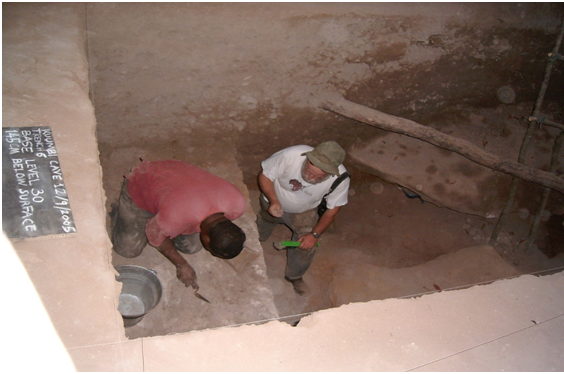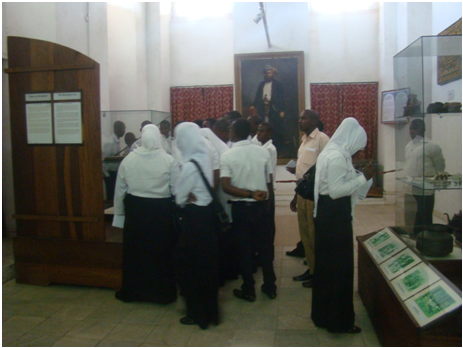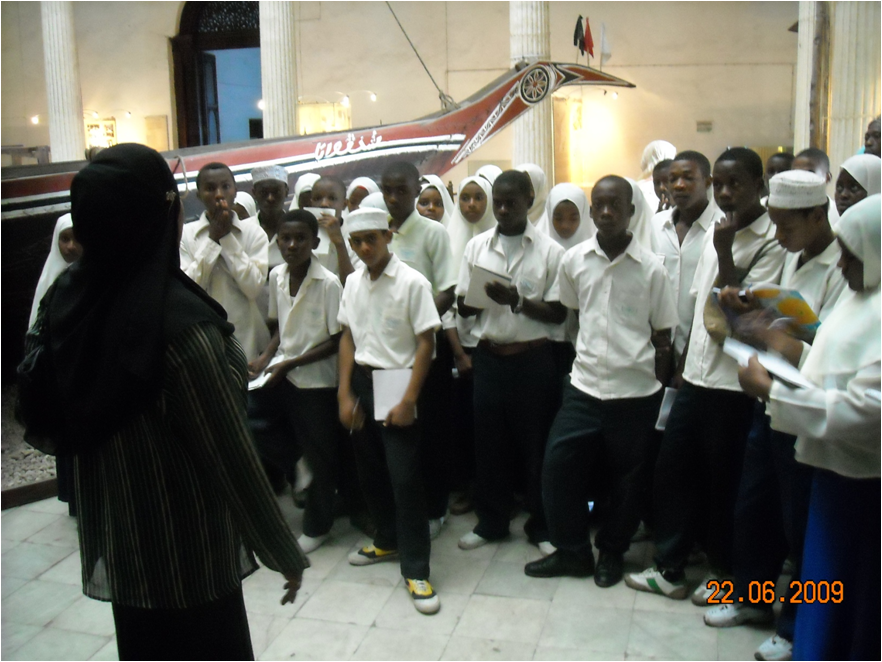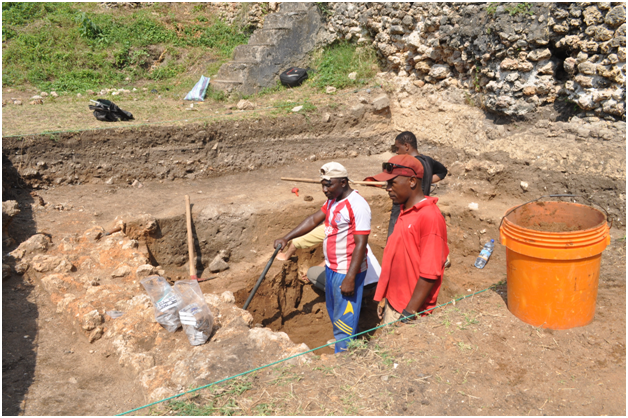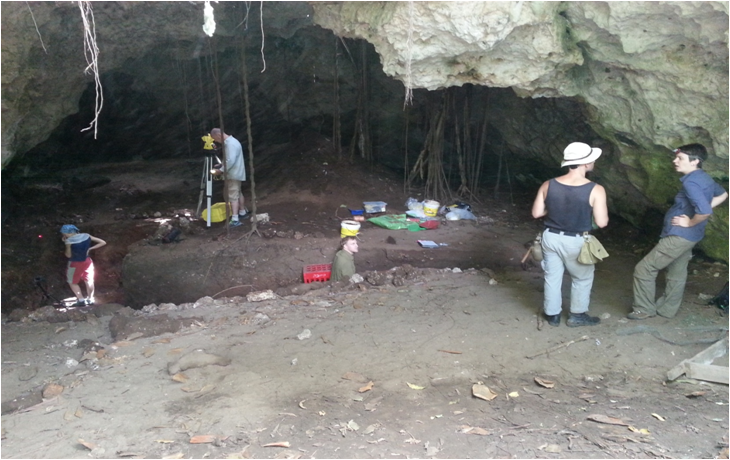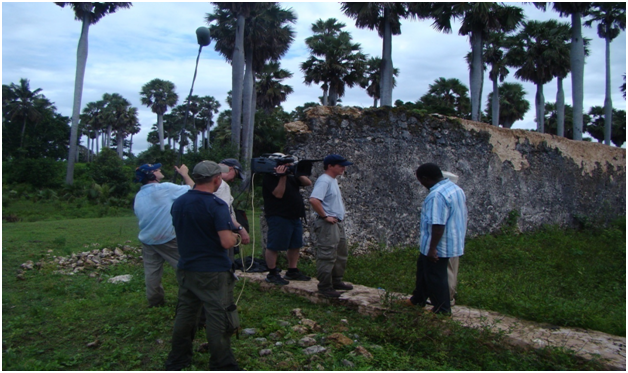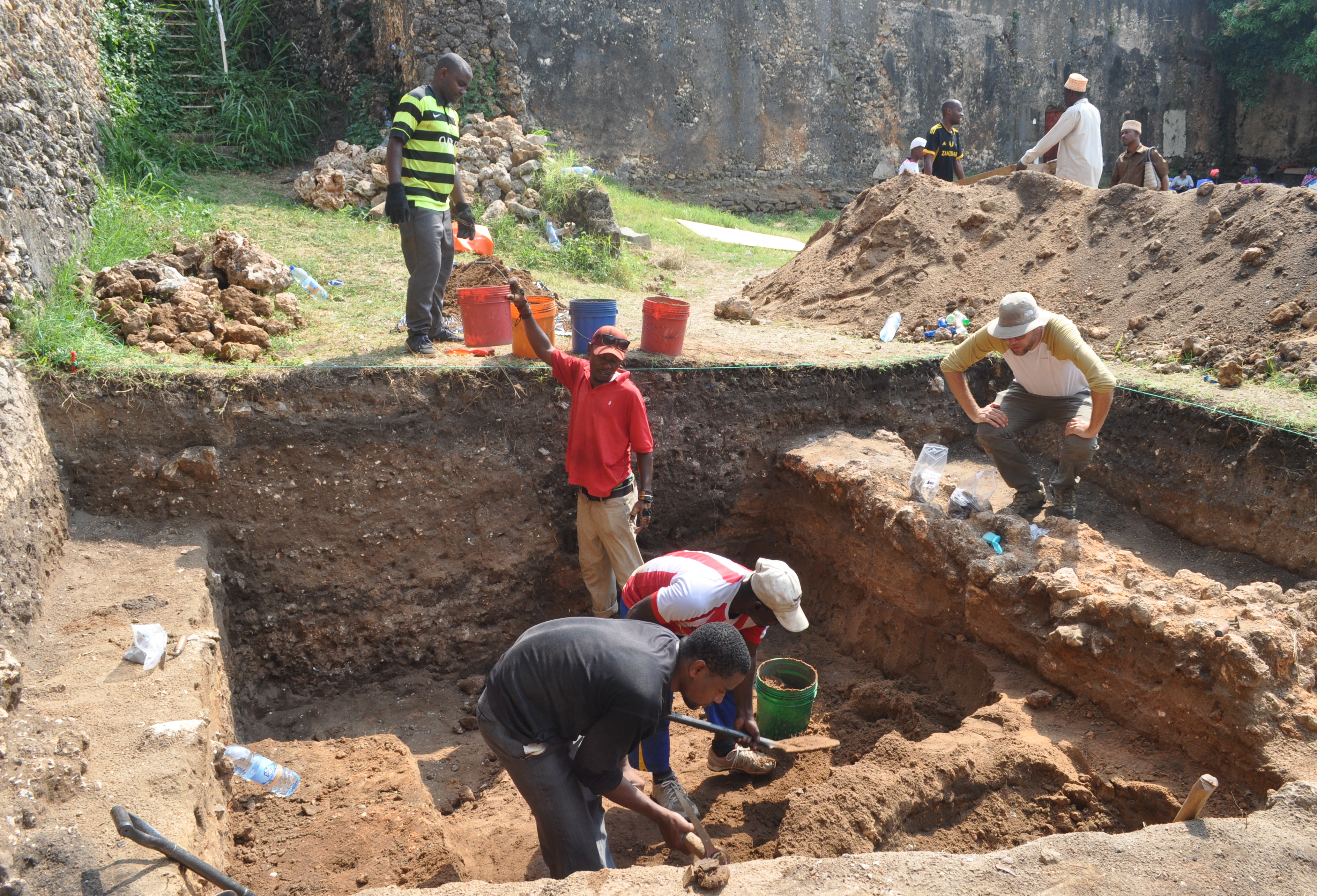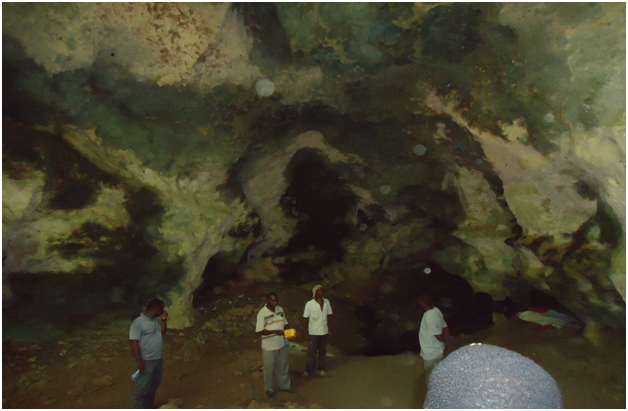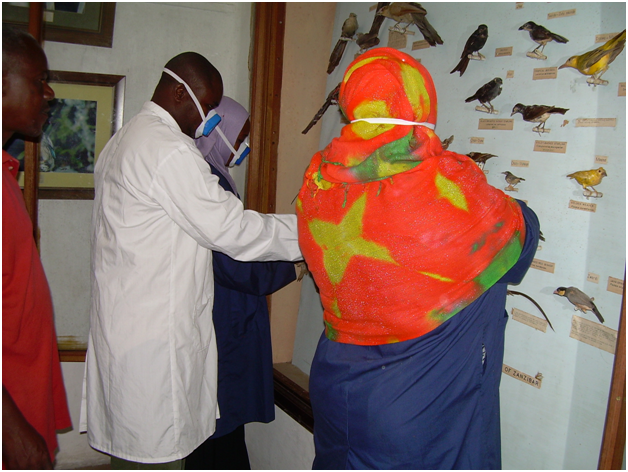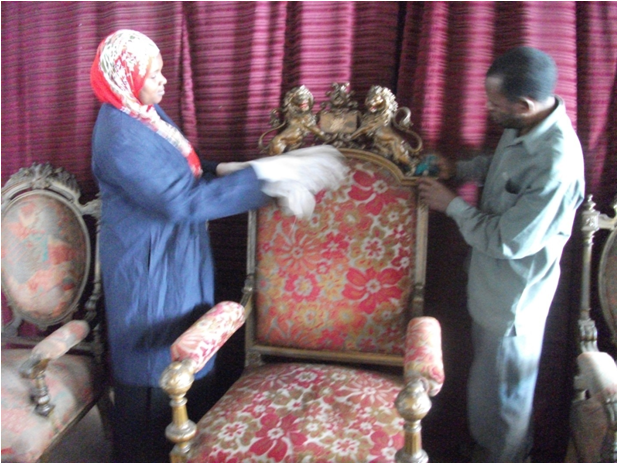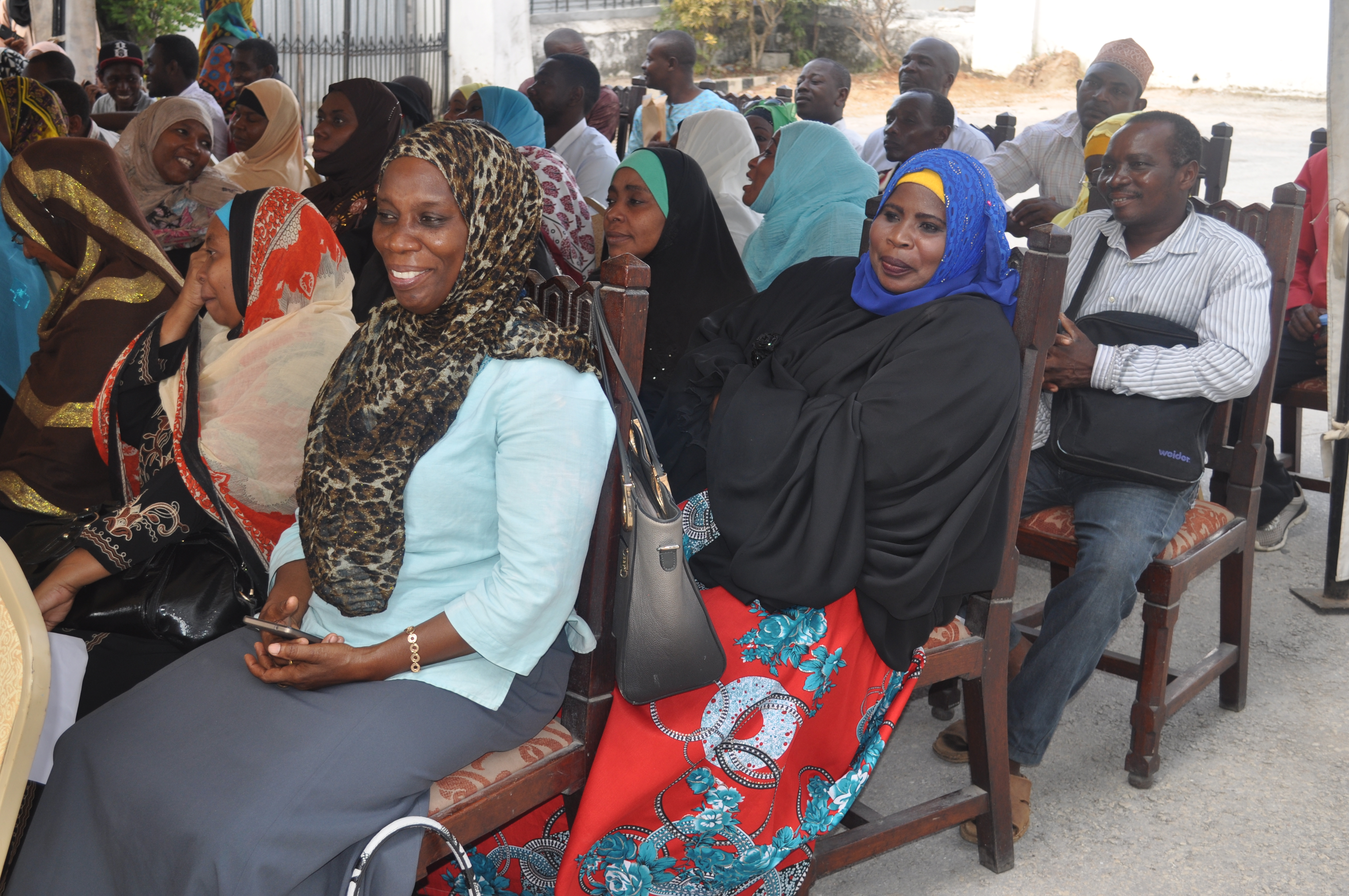
MUSEUM DIVISION
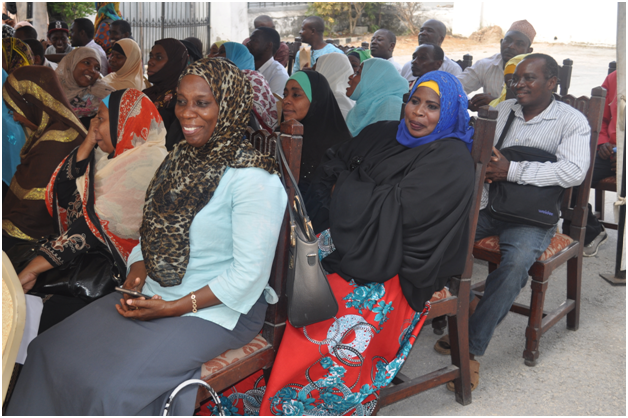
Museums Division: It has six museums which are:-
1. House of Wonders Museums (2002).
2. Palace Museum (1994).
3. Pemba Museum located at the Old Fort in Chake (2005).
4. Peace memorial museum located at Mnazi Mmoja (1925) and Natural and History museum (1930).
5. Kuumbi site museum
6. Unguja Ukuu site museum
In history the first museums started in 1925, known as Beit Al Aman ‘(Peace Memorial Museum)’situated at the Mnazi mmoja area.
This museum built in remembrances of the First World War victims in 1914 – 18.
After the Revolution another museum started such as Palace Museum at the Forodhani and Chake chake museum in Pemba.
In 2002, Government shifted the Mnazi mmoja museum to “Beit al Ajaib” house of Wonders and Mnazi mmoja remains as a Natural museums only.
The decision to use house of wonders as a National museum came with a big hope, because now this museum is well known not only in East and central of Africa but also rest of the World.
So many visitors from different places visit the museum.
Division responsibilities
• To teach societies on culture, heritage, ancestors, political development, technology economy etc.
• Museums’ provides information to researches and students in the different field.
• This museum helps a lot boosting tourism sector and increase Government income.
• Museum Division with its educational unit has mission collaborate with private and Government sector prepare education tour in museums and historical sites.
• Statistics shows that 600 to 1,500 students visit museums every month.
• In 2009 -10, 8,586 students from primary, secondary and college visits museum. Educational unit in the museum provides advice, research information for students from educational institutes.
• Museum division also conducts historical researches with the aim of discovering and collecting valuable data that help to prepare the topics that are taught in a special class underlying the main museums in Beit al Ajaib.
It is a class with using modern equipment like projector screen etc.,
• Prepares and displays permanent and temporary exhibitions concerning historical and culture.
• Among the exhibits includes Sultan’s life (in Palace Museums), the exhibition of biodiversity (Natural Historical Museum),
an exhibition of Stone Town, Maritime Exhibition, Sayyida Salme exhibition, Clothes, Culture, Commercial empire etc.
• In additional, these museums become a major attractions and entertainment for Community and visitors.
The Museum Education Unit has following duties.
1. To organize, manage and offer tours to the visitors and students visiting to the museum and historical sites.
2. To give lectures or instructions to the visitors and learners attending the museums.
3. To assist and guide the researchers who are seeking information relating to Zanzibar history and culture.
4. To provide accurate required historical and Culture information to the researchers and learners for academic purpose.
5. To organize, supervise and take care of the museum exhibitions incorporation with other museum sections.
6. To conduct researches in order to collect valuable information for educational programs.
7. To motivate the people within and outside the country to visit and use our museums and historical sites for enjoyment, learning, leisure and rest.
To inspacte Zanzibar monuments and ruins , and looking for thedevolopment, challanges and advive the department what should be taken to make site in safe condition. Also, another functions is to visit Zanzibar Historical sites and report as quik as possible in case there are the destruction , demage accident or illegal taking of Historical area or ruins
CONSERVATION:
DOCUMENTATION:• The duties of documentation Unit: To register all artifacts most concerned with documentation and record keeping. This documentation includes information about an object's condition, its accession number or identification number and its status in the museum, provenance, materials, and all of its movement within the museum or out on loan. • • When an object arrives at the museum for the first time as a prospective addition to the collection, a registrar immediately begins the documentation and tracking process by assigning a temporary identification number and assembling records that include the object's condition, date of arrival, the reason for its arrival at the museum, and a photograph documenting its physical appearance. This information follows the object through the acquisition process, tracking its movements. If the museum decides to accept the object, the registrar will then update the record, assigning a permanent accession number to the object. • Loans: Objects are loaned between museums for a variety of reasons, typically for special exhibitions. As with acquisitions, the registrar assigns a temporary identification number to objects on loan to the museum, documents their condition, and creates a file to follow the object's movement while it is in the museum. Registrars are also present at the loading dock upon arrival to supervise the unloading, condition of packing material, and ensure that the objects are handled properly. In the case of outgoing loans, the registrar documents which objects are leaving the museum and either carries out or oversees their packing for shipment, and loading into the shipping vehicles.
The roles of Markerting, Publicity and Information Technology. 1 To undertaken all Publicity and Markerting activities. 2 To undertake , develop, and update the departmental website and any others information devices. 3 To create, plan ,propose and take necessary measure for the Department. 4 To link and corperate with departmental units and all tourism agencies inboosting mutual relationship. 5 To creat the awareness to the whole communities. 6 To organise TV's and Radio's programms. 7 To arrange domestic tourism tourisms trips to museums and Antiquities destination. 8 To organise and participate in exhibition. 9 To undertake regular advertisement through magazines, flyers, brochures, barners, posters, calendes, maps and any other means od media reacheable by the domestic and International communities. 10 To providing routing working and directive reports. 11 To prepare working and budget plan according to the requirement.
